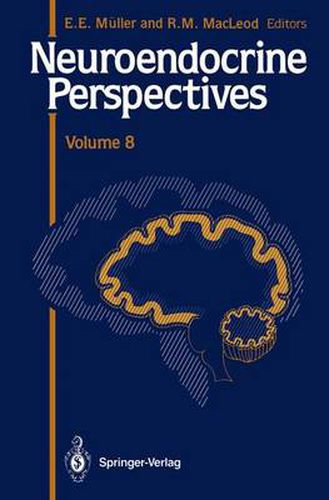Readings Newsletter
Become a Readings Member to make your shopping experience even easier.
Sign in or sign up for free!
You’re not far away from qualifying for FREE standard shipping within Australia
You’ve qualified for FREE standard shipping within Australia
The cart is loading…






This title is printed to order. This book may have been self-published. If so, we cannot guarantee the quality of the content. In the main most books will have gone through the editing process however some may not. We therefore suggest that you be aware of this before ordering this book. If in doubt check either the author or publisher’s details as we are unable to accept any returns unless they are faulty. Please contact us if you have any questions.
The flow of information in neuroendocrinology and related disciplines is vigorous, favored by the availability of sensitive and specific biochemical and histochemical techniques that advance our knowledge of CNS neurotransmitter and neuropeptide systems. Volume 8 of Neuroendocrine Perspectives illuminates new findings inthis areawhich add complexity to the traditional view ofthe hypothalamo- pituitary control, and to established concepts ofthe modulation ofbrain function by target hormones. In the first chapter, Ben-Jonathan exhaustively reviews evidence derived from her own work that demonstrates the importance of the posterior lobe as a regulator of prolactin secretion via two opposing influences, i. e. , dopamine released by the tuberohypophyseal dopaminergic system into the short portal vessels and a prolactin-releasing factor which is produced locally, though the identity of its innervating neurons is still unclear. Despite the wealth of information on prolactin and its cell of origin, little is known about the manner in which the hormone exerts its effects on target cells. Frawley and coworkers thoroughlyexamine the direct actions ofprolactin on a broad spectrum ofmammalian tissues, dealing extensivelywith prolactin receptors and the putative second messengers. They also review new evidence, based on their original findings, for an indirect action ofprolactin exerted through the livervia synlactin and liver lactogenic factor, two extracellular modulators ofthe biological functions ofthe hormone. The relationships among the CNS, neuroendocrine and immune systems are bidirectional and constitute an integrated loop.
$9.00 standard shipping within Australia
FREE standard shipping within Australia for orders over $100.00
Express & International shipping calculated at checkout
This title is printed to order. This book may have been self-published. If so, we cannot guarantee the quality of the content. In the main most books will have gone through the editing process however some may not. We therefore suggest that you be aware of this before ordering this book. If in doubt check either the author or publisher’s details as we are unable to accept any returns unless they are faulty. Please contact us if you have any questions.
The flow of information in neuroendocrinology and related disciplines is vigorous, favored by the availability of sensitive and specific biochemical and histochemical techniques that advance our knowledge of CNS neurotransmitter and neuropeptide systems. Volume 8 of Neuroendocrine Perspectives illuminates new findings inthis areawhich add complexity to the traditional view ofthe hypothalamo- pituitary control, and to established concepts ofthe modulation ofbrain function by target hormones. In the first chapter, Ben-Jonathan exhaustively reviews evidence derived from her own work that demonstrates the importance of the posterior lobe as a regulator of prolactin secretion via two opposing influences, i. e. , dopamine released by the tuberohypophyseal dopaminergic system into the short portal vessels and a prolactin-releasing factor which is produced locally, though the identity of its innervating neurons is still unclear. Despite the wealth of information on prolactin and its cell of origin, little is known about the manner in which the hormone exerts its effects on target cells. Frawley and coworkers thoroughlyexamine the direct actions ofprolactin on a broad spectrum ofmammalian tissues, dealing extensivelywith prolactin receptors and the putative second messengers. They also review new evidence, based on their original findings, for an indirect action ofprolactin exerted through the livervia synlactin and liver lactogenic factor, two extracellular modulators ofthe biological functions ofthe hormone. The relationships among the CNS, neuroendocrine and immune systems are bidirectional and constitute an integrated loop.